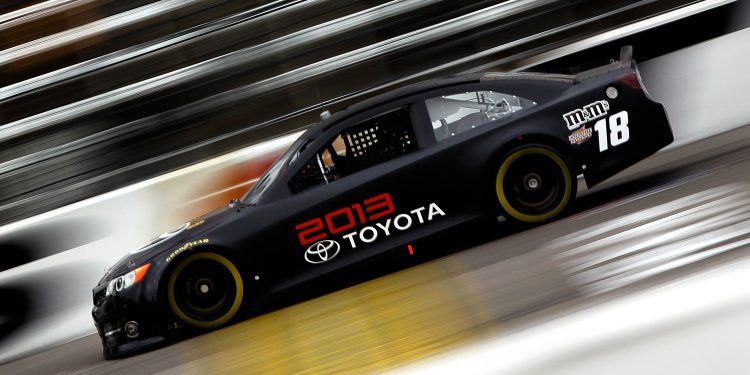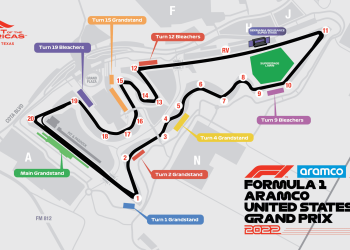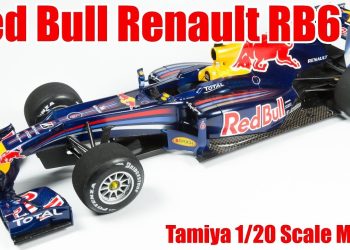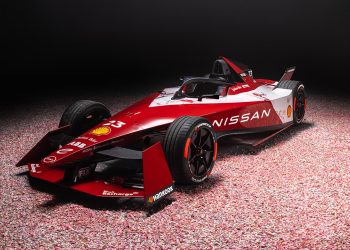The racing tracks have a whiff of burnt rubber, the air buzzes with excitement, and a growing number of NASCAR fans are shifting their attention toward the glamorous circuits of Formula 1. But what’s causing this change in preference? Racing is racing, right? Well, let’s talk it out.
As sports fans seek engaging storytelling and competitive thrill, many find themselves glued to the high-speed world of Formula 1. NASCAR, with its circle tracks and power-packed events, has been an American staple since the 1940s. Conversely, Formula 1 raced into the scene in 1950, bringing with it an international allure and cutting-edge technology that now seems undeniable.
The Allure of Speed: What’s Drawing NASCAR Fans to Formula 1?
NASCAR promises fierce competition; it’s fast-paced, raw, and intense. Yet, there’s a sparkle in Formula 1 that’s becoming harder to ignore. Fangio, Senna, Hamilton—these names represent not just drivers but legends forged in the crucible of challenging circuits across the globe. Each race is a tactical battle with strategy often overtaking speed.
Did you know? Formula 1 cars are among the most technologically advanced vehicles on the planet. With speeds crossing 230 mph, they outperform NASCAR’s best by a fair margin in terms of technological sophistication.
Historical Perspectives: Roots and Growth of NASCAR and Formula 1
NASCAR originated from bootlegging days back in the Prohibition era, with drivers needing speed and skill to outrun the law. Meanwhile, Formula 1 weaves a different tale, emerging from the European Grand Prix Motor Racing of the early 20th century, with a focus on precision and technological prowess.
Both sports carry rich histories but differ vastly in their cultural and historical roots. While NASCAR has remained relatively regional, mainly captivating North America, Formula 1’s circuits span 21 countries, attracting a diverse, international fan base.
Comparing the Excitement: Tracks, Tech, and Talent
Loop after loop in NASCAR, there’s familiarity. But throw in Monaco’s hairpins or the dusty straights of Bahrain in Formula 1, and you have the proverbial box of chocolates—you never know what you’re gonna get. These differences provide distinct experiences and flavors of motorsport; it’s a mix that leaves fans asking for more.
Drivers are a big draw, too. NASCAR legends like Dale Earnhardt and Richard Petty have become household names, but the global icon status of F1 drivers like Lewis Hamilton and Sebastian Vettel perks up the curiosity of many. The talents in Formula 1 are often perceived as elite owing to stringent selection and the global stage they compete on.
Cultural and Global Appeal: Why Formula 1 Feels Like a Bigger Stage
Here’s the thing: the sport isn’t just about what happens on the track. Cultural events, glamorous destinations, and the intersection with global politics enhance Formula 1. A F1 Grand Prix weekend is a spectacle—a gathering of the world’s elite where both motorsport and culture meet.
Tip: For an authentic Grand Prix weekend experience, some fans recommend attending the race alongside exploring local culture, food, and landmarks to truly appreciate the global appeal of Formula 1.
Television, Streaming, and Social Media: A New Era of Sports Viewing
The digital age has rewritten the rulebook, bringing Formula 1 into our homes with the click of a button. Platforms like Netflix, with their series “Drive to Survive,” have peeled back the curtain, drawing new audiences by revealing the behind-the-scenes drama, human conflicts, and team strategies at play in the F1 world.
Everyone’s talking on social media, sharing real-time reactions, and fostering communities online. You get to be part of a global conversation, with fans from Japan to Brazil reacting in tandem. This ease of access has dynamically shifted how fans interact with and perceive motorsport.
Fan Engagement: How Formula 1 Connects with Its Audience
Interactivity reigns supreme. Whether it’s through AR/VR technologies in fan zones during races or engaging digital content, Formula 1’s strategy to connect with its fans is about inclusion. NASCAR, on the other hand, trots a more rugged, hands-on approach. Yet, the switch towards digital has spotlighted Formula 1’s adaptability in creating a modern-day fan involvement experience.
And let’s not forget fantasy leagues and simulations that let you manage your dream team or sit in the driver’s seat virtually. They’ve become significant in enhancing viewer participation in motorsport.
Beyond the Race: Lifestyle and Environmental Considerations
With the world increasingly focusing on sustainability, Formula 1 has initiated steps towards a greener future, promising carbon-neutral operations by 2030. Hybrid engine technology and sustainable fuels are on their agenda, which might just appeal to the environmentally conscious fans of today.
NASCAR too has taken eco-conscious strides, but often perceptions align Formula 1 with progressive sustainability goals that resonate more with the younger generation.
Below is a detailed table comparing NASCAR and Formula 1 features:
| Aspect | NASCAR | Formula 1 |
|---|---|---|
| Origins | USA, 1948 | International, 1950 |
| Main Region | North America | Global |
| Annual Audiences | 70 million | 400 million |
| Number of Races | 36 | 23 |
| Vehicle Speed | 200 mph | 230+ mph |
| Technological Evolution | Moderate | High |

Frequently Asked Questions (FAQ)
Why are some NASCAR fans preferring Formula 1 now? NASCAR fans might be drawn by Formula 1’s technological advances and global events, offering a fresh and exciting take on motorsport.
Is Formula 1 more expensive to follow than NASCAR? Following Formula 1 can be pricier due to its international travel requirements for races, though digital access has bridged some gaps.
Will Formula 1 keep evolving? Certainly. With sustainability goals and technological prowess at its heart, Formula 1 is poised to keep transforming.
Conclusion
In wrapping up, while NASCAR provides its own charm with rugged racing and heartfelt American roots, Formula 1 offers a thrilling experience with its technology-savvy approach and international appeal. As the racing world evolves, fans might find themselves, more often than not, captivated by the thrilling narrative that Formula 1 continues to build. Thanks for tagging along for the ride, and don’t forget to explore more articles on our website to fuel your passion for motorsport!















